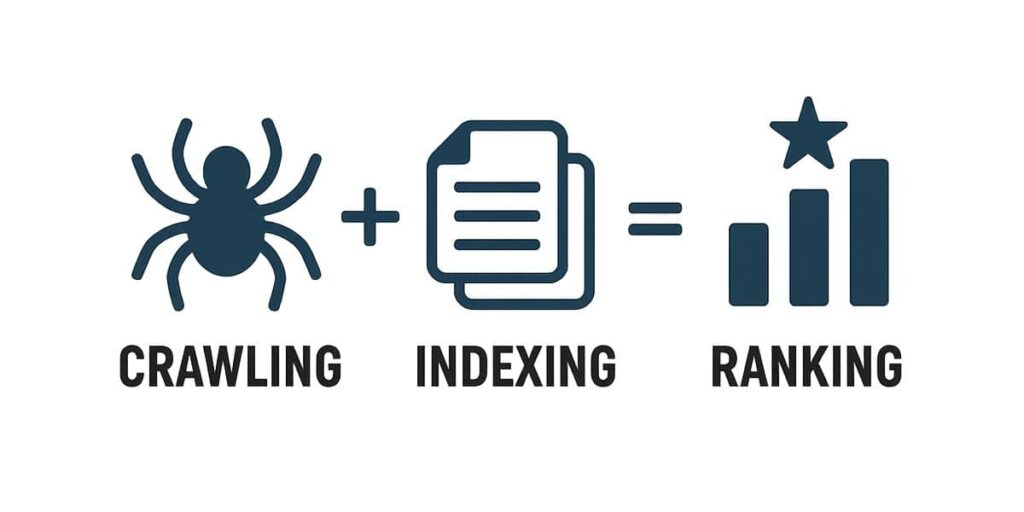Website Crawling & Indexing
The Foundation of Search Visibility … Before any webpage can rank in Google, it first needs to be found, and then understood. That’s where crawling and indexing come in. These two processes form the bedrock of technical SEO, silently powering every other optimisation effort behind the scenes.

If your site isn’t being crawled efficiently or indexed correctly, even the most polished content or fastest page speed won’t make a difference. Search engines can only rank what they can access and comprehend. This page explores the essential mechanics of crawling and indexing, the technical elements that affect them, and why getting them right is non-negotiable for long-term search visibility.
What is Crawling?
Crawling is the process by which search engines, such as Google and Bing, discover new and updated content on the web. They do this by deploying automated bots (often called “spiders” or “crawlers”) that systematically browse your website by following internal and external links.
These bots gather data from each page and assess how it connects to the rest of your site, and the wider web.
What is Indexing?
Once a search engine crawls a page, it determines whether the content should be stored in its index, a massive database of all the web pages deemed eligible to appear in search results. If a page is not indexed, it will not be displayed in search engine results pages (SERPs), regardless of its quality or relevance.
Why Crawling & Indexing Are Crucial to SEO
Crawling and indexing are essential because they:
- Help search engines understand your site’s hierarchy and content relevance
- Determine which pages are accessible to search engines
- Influence how frequently your site is updated in the index
Affect the allocation of your site’s “crawl budget”, the number of pages search engines will crawl in a given timeframe.
Crawling & Indexing Checklist
- Create & Submit XML Sitemap to Google Search Console & Bing Webmaster Tools
- Ensure robots.txt allows search engines to crawl important pages
- Use canonical tags to prevent duplicate content issues
- Add meta robots tags to control indexing (e.g.,
noindex, followfor non-essential pages) - Implement self-referencing canonical URLs on all pages
- Use noindex & nofollow for paginated pages, internal search results, and thin content pages
- Check and fix crawl errors in Google Search Console (404s, 500s, etc.)
- Monitor crawl budget (especially for large sites)
- Ensure internal linking is optimised to help search engine bots discover deeper pages
- Use breadcrumb navigation for better crawling and user experience
- Optimise pagination & infinite scroll to ensure search engines index all important content
- Implement a flat site structure for better discoverability
- Use structured data (Schema Markup) to improve indexing and rich snippets
- Remove duplicate content with proper redirects or canonicalisation
- Set up Google Search Console & Bing Webmaster Tools to track crawling and indexing issues
- Monitor server logs to analyse bot activity and identify crawl inefficiencies
Why It Matters for Technical SEO
Crawling and indexing form the backbone of technical SEO. Every optimisation, from speed to schema, relies on the assumption that your pages are being seen and understood by search engines. Addressing crawlability and indexability is not optional; it’s foundational.
Let’s Align Your Website with Search Engine Best Practices – Seamlessly
Our technical SEO services are designed to integrate with your wider business objectives, ensuring your website is fast, compliant, and highly indexable.
Speak with us today to explore a tailored, strategic approach that eliminates roadblocks and positions your site for long-term search success.